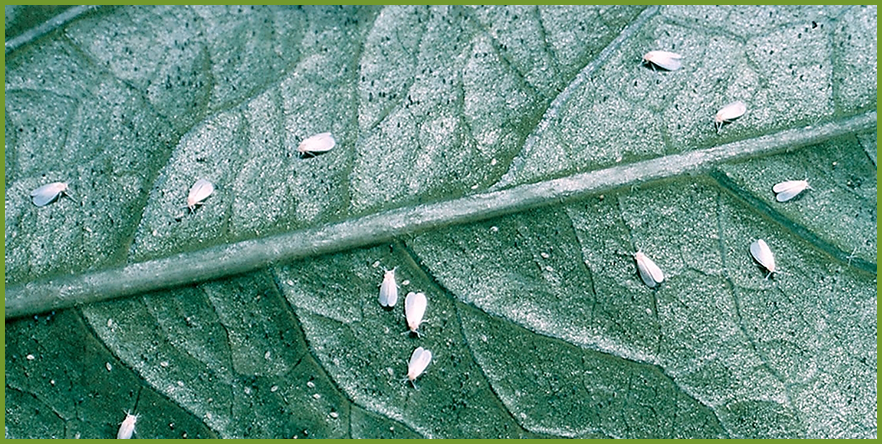
As the temperature starts to increase not only does that mean warm sweaty days, but an influx of insects that will attack our trees and our gardens. Unfortunately, not all of these insects are welcome, like the butterfly, but that doesn't mean that these bugs need to ruin your perfect landscape.
Our experts have identified five of the most common insects you will come across this summer with recommendations on how to treat them. If you have any questions, please visit us at any of our Moon Valley Nurseries locations. Our locations always have a great selection of insecticides plus our nursery pros are always here for guidance and advice.
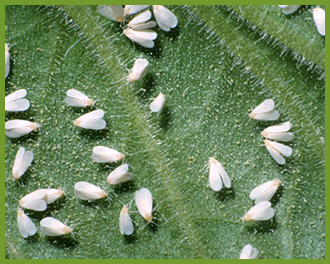
Whiteflies
Identification - These tiny insects can wreck havoc on your landscape even though they are 1/16 of an inch long. Identification for these pests is quite easy. As the name suggests, they are white and they look like tiny flies. They are usually found in thick crowds underneath a leaf. You know you have found them because when they are disturbed, they will all fly in the air.
Damage - The whitefly is a sap-sucking insect that uses its piercing mouthparts to suck sap from the phloem. That is the part in plants that conducts sugars and other metabolic products downward from the leaves. Numerous whiteflies can cause leaves to turn yellow and appear dry which may make the leaves fall off.
How to treat - Whiteflies in large numbers can cause significant damage. To control them, spray plants with hose. We would also recommend removing the heavily damaged and infested leaves. You can also introduce ladybugs as they are a natural predator. Insecticides (spray bottles) are another option and those are available at any Moon Valley Nurseries location.
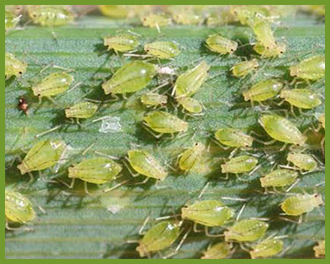
Aphids
Identification - These bugs are slow moving. We're talking slower than molasses slow here. They do not fly and their color may be yellow, green, orange, or pink. They are usually pear-shaped and they have long antennae. They are also soft-bodied.
Damage - Aphids are also sap-sucking, however, they will not damage the material in your landscape as bad as the whitefly. Large populations of these can cause leaves to turn yellow or stunt shoots. Aphids also excrete honeydew, which attracts ants. Ants will not damage the plant as they actually protect the aphids from predators.
How to treat - There are many options to treat against aphids. One of the easiest is to hose the plants down. Be careful when applying water pressure on young or tender plants and trees. Other options include physical removal (did we mention they are slow), soap and water, removal of ant colonies, and systemic insecticides which are available at any Moon Valley Nurseries location.

Scale Insects
Identification - There are two ways to identify this bug. Armored scales and soft scales. For identification of the armored bug, it looks like a shield that covers the entire bug, but it is not attached to the body of the insect. For soft scales, honeydew is usually the first sign that it is a soft scale. The soft scale is also has a powdery or waxy layer.
Damage - Like the other bugs on this list, scale feeds on the phloem of the plant. In large quantities, scale bugs can stunt a plants growth and it can negatively impact other healthy parts of the plant.
How to treat - For starters, it is important to identify which species of scale you are dealing with. The experts at Moon Valley Nurseries can assist with that. If you need to do something now, remove the infested branches on the plant. If you're not squeamish, you can remove them with your hand. If there is a infestation, insecticides may be the best option for these pests.
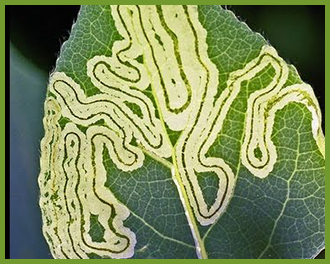
Leaf Miner
Identification - Quite easy to identify. This very small moth (when in the larval stage) mines through citrus leaves. The photo to the right is what it looks like.
Damage - The damage looks likes tunnels in the leaves. Shoots of citrus leaves can be damaged and they look curled or distorted.
How to treat - By the time you have found the damage from the leaf miner it is usually gone. Older trees can handle a few leaves that have been damaged, but you will want to keep an eye on younger trees and trees that appear to have an infestation. Best control is to let the leaf miner do its thing. If you are concerned about damage please visit a nursery pro at Moon Valley Nurseries.
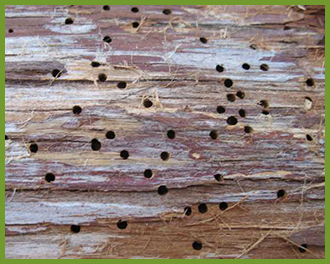
Bark Beetle
Identification - These tiny insects (about the size of a grain of rice) are easily identified by holes on surface of trees. These holes are where where the new adults have emerged.
Damage - The external damage will be a hole on the tree. On the inside, the bark beetle will mine the inner bark.
How to treat - Best treatment for this is for you to regular monitor your trees and to apply insecticide before the beetles arrive.
Submit a Comment